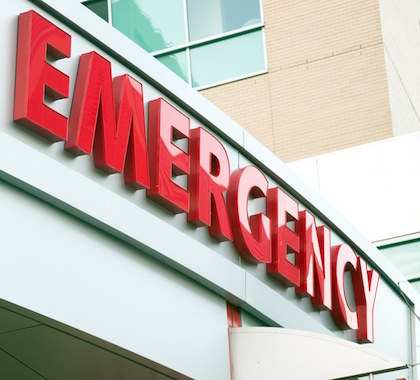The study from the Health Care Cost Institute arrives on the heels of a Healthcare Cost and Utilization Project (HCUP) Statistical Brief published in Spring 2018 that found the cost for an emergency room visit reached a 10-year high in 2015.
Patients with non-urgent health problems are increasingly relying on doctors, staff, and facilities that are supposed to be devoted to critical and unexpected health emergencies, the study reports. Federal law requires all hospitals that receive Medicare patients to examine anyone seeking medical treatment, regardless of ability to pay. Much of the emergency care in the United States is performed without compensation to the provider, according to the Centers for Medicare and Medicaid Services.
‘Alarming’ Rise in Costs
The increase in the cost of emergency room visits is a huge red flag, says Jordan Roberts, a health care policy analyst at the John Locke Foundation.
“Emergency room visit costs have been rising at an alarming rate over the past several years,” Roberts said. “This is concerning because not only does the cost of providing health care continue to rise, emergency room care in hospitals is some of the most expensive care you can get.”
Regulatory Obstacles
Charlie Katebi, a state government relations manager with The Heartland Institute, which publishes Health Care News, says government regulations limiting who can provide health care are partly to blame for emergency room overuse and the high costs related to many people’s reliance on emergency health care.
“Many patients, very often in rural or low-income areas, don’t have access to an affordable doctor or clinic in their region,” Katebi said. “Loosening regulations on nurses, dental therapists, physician assistants, and even certificate of need laws—which can keep doctors from entering the market—would help by potentially allowing access to those health care professionals who might find ways to practice in those areas where they couldn’t before.
“Many people head to the emergency room because they don’t see anywhere else they can go for help,” Katebi said. “Giving more options to patients seeking care, especially those in government programs such as Medicaid, would relieve much of the strain on emergency staff and facilities.”
Those and other improvements in access to primary care could reduce the need for emergency room visits, Roberts says.
“Better, more thorough primary care will not only help patients avoid emergency room care because of medical reasons, but also it is necessary for the ‘health education’ aspect of care,” Roberts said. “I think Americans have a difficult time choosing the correct facility to receive care from, depending on the situation, mostly because of how complex and tangled the entire health care system is in America, and partly because with insurance, most consumers don’t care to take the time to figure out costs and shop for the best value.”
New Options Through Technology
Embrace of innovative health care options can break down some barriers to timely primary care, if legislators and regulators allow the health care system to evolve, Roberts says.
“Many of these problems could be solved with increased access to telemedicine,” Roberts said. “Ailments that people seek care for in the emergency room could often have been treated via telemedicine, which can help to avoid the expenses associated with a trip to the emergency room while still getting the same level of care.”
Refining the Definition
More clearly defining what constitutes an “emergency” could also be useful in addressing the problem, Roberts says.
“It seems that there is an emerging trend of insurers defining what they deem as ’emergency care’ very differently than in the past, and various insurers define it differently,” Roberts said. “I think this is partly due to the fact that many people choose the emergency room to receive care for something that could be treated in another setting.”
INTERNET INFO:
Ruirui Sun, Zeynal Karaca, and Herbert S. Wong, “Emergency Department Use by Age, Payer Statistical Brief,” Healthcare Cost and Utilization Project, March 2018: https://www.hcup-us.ahrq.gov/reports/statbriefs/sb238-EmergencyDepartment-Age-Payer-2006-2015.jsp





